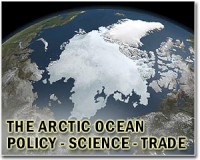| . |  |
. |
Falmouth, MA (SPX) Feb 23, 2011 A new study released in the EarlyView of Ecology Letters addresses forest productivity trends in Alaska, highlighting a shift in biomes caused by a warming climate. The findings, conducted by scientists at the Woods Hole Research Center and three other institutions based in Alaska and France, linked satellite observations with an extensive and unique tree-ring data set. Patterns observed support current hypotheses regarding increased growth of evergreen forest at the margins of present tundra and declining productivity at the margins of temperate forest to the south. This study provides a regional picture of forest productivity which did not previously exist. According to lead author Pieter Beck, a post-doctoral fellow at WHRC, "The results provide evidence for the initiation of a biome shift in response to climate change, and indicate that some ecosystem models may be missing fundamental changes taking place in the circumpolar region." He adds that "while the findings contrast with some recent model predictions of increased high latitude vegetation productivity, they are consistent with longer-term projections of global vegetation models." Scott Goetz, a senior scientist at WHRC, proposed the study and co-authored the manuscript. He says, "Most people don't think of high latitudes forests as being drought stressed - and they are not in the traditional sense of having soils dry up and blow away - but their growth is negatively impacted by hot dry air masses and those have increased in recent years. "This paper shows those drought impacts are captured in both the satellite and the tree ring record. Of course the tree rings go back in time much further than the satellite observations, which only extend about 30 years, but the changes that we observe from satellites are clearly supported not only by the tree rings but also by carbon isotope analysis of the wood." Beck adds that climate driven changes in the disturbance regime, which can rapidly alter forest dynamics and the ability of boreal forests to migrate into current tundra areas, will most likely shape the biome shift in the future. In addition to WHRC, researchers from the University of Alaska School of Natural Resources and Agricultural Sciences, the Pantheon Sorbonne Archeologie des Ameriques, and the Bureau of Land Management participated in the study and co-authored the paper.
Share This Article With Planet Earth
Related Links Woods Hole Research Center Beyond the Ice Age
 Canada beefs up Arctic weather tracking
Canada beefs up Arctic weather trackingOttawa (AFP) Feb 22, 2011 Canada will invest CAN$34.8 million (US$35.2 million) in meteorological and navigational warning services in the Arctic, the government announced Tuesday. The funding over five years is to provide enhanced accessibility to weather data and navigational shipping information for mariners, economic sectors and the general population of the far north, it said. Research suggests global warmin ... read more |
|
| The content herein, unless otherwise known to be public domain, are Copyright 1995-2010 - SpaceDaily. AFP and UPI Wire Stories are copyright Agence France-Presse and United Press International. ESA Portal Reports are copyright European Space Agency. All NASA sourced material is public domain. Additional copyrights may apply in whole or part to other bona fide parties. Advertising does not imply endorsement,agreement or approval of any opinions, statements or information provided by SpaceDaily on any Web page published or hosted by SpaceDaily. Privacy Statement |